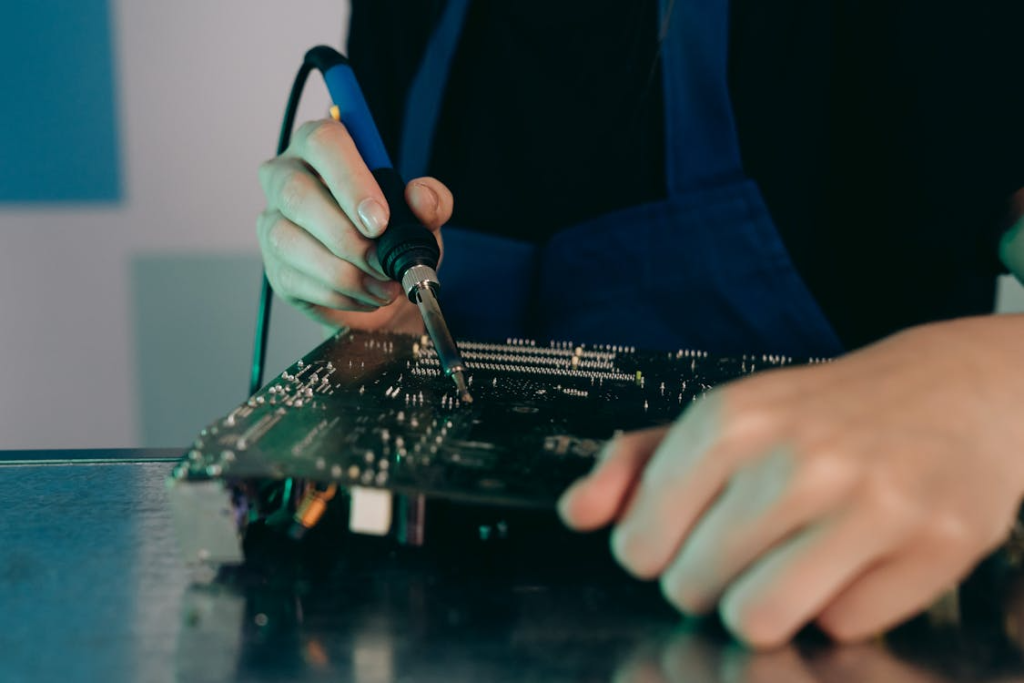In the world of beauty and hairstyling, hair extensions have become a game-changer. They allow people to experiment with different hair lengths, volumes, and textures without the lengthy wait for natural growth. Whether you’re looking to revamp your own look or embark on a career as a professional stylist, hair extension training is the key to mastering this art.
Learning how to apply extensions with precision, care, and style will not only boost your skills but also help you achieve flawless results for your clients. In this ultimate hair extension training guide, we will explore everything from different types of extensions to professional techniques, tools, and tips for ensuring long-lasting, beautiful results.
Whether you’re new to the world of extensions or looking to refine your technique, this guide will provide you with all the essential knowledge to take your skills to the next level.
What Are Hair Extensions?
Hair extensions are strands of hair (either natural or synthetic) added to your natural hair to enhance its length, volume, and style. They are available in various forms, including clip-ins, tape-ins, sew-ins, micro-beads, and fusion extensions. Each type has its own application method, advantages, and best-use scenarios. Whether you’re trying to add some length for a special occasion or aiming for a permanent style transformation, hair extensions offer endless possibilities.
Why Is Hair Extension Training Important?

Proper hair extension training is crucial for anyone wishing to work with extensions professionally. Incorrect application methods can lead to damage to both the client’s natural hair and the extensions. Additionally, poorly applied extensions can be uncomfortable, unsightly, and cause long-term hair issues.
Here are some reasons why training is essential:
- Prevent Hair Damage: Applying extensions incorrectly can cause breakage, scalp irritation, and other issues. Training teaches you how to apply extensions while maintaining the health of the client’s natural hair.
- Ensure Client Satisfaction: Proper training ensures that you understand how to achieve seamless, natural-looking extensions that will leave clients happy and coming back for more.
- Boost Your Career: For professionals, having hair extension training in your skill set can expand your service offerings, attract new clients, and increase revenue.
Different Types of Hair Extensions
There are several types of hair extensions, each with its own application technique. Understanding these types is a crucial part of your hair extension training.
1. Clip-in Extensions
These are temporary extensions that can be clipped into your natural hair. They are easy to apply, and clients can remove them at the end of the day. Clip-ins are ideal for individuals who want a quick style change for special events or everyday use.
2. Tape-in Extensions
Tape-ins are semi-permanent extensions that use adhesive strips to attach to natural hair. They are lightweight and comfortable but require regular maintenance every 6–8 weeks.
3. Sew-in (Weft) Extensions
Weft extensions are sewn into braided sections of the client’s natural hair. This technique is often used for thick or coarse hair. Sew-ins are popular for creating fuller, voluminous looks.
4. Fusion Extensions
Fusion extensions are bonded to natural hair using heat or adhesive. They offer a long-lasting result but require precise application to prevent damage to natural hair.
5. Micro-bead Extensions
Micro-beads are small beads that hold the extension strands in place without the use of heat or glue. This method is gentle on the hair and provides a natural look with little maintenance.
How to Choose the Right Hair Extension Training Course
When selecting a hair extension training course, it’s essential to pick one that aligns with your learning goals, whether you’re a complete beginner or an experienced stylist looking to refine your skills. Here’s what to consider:
- Reputable Instructor: Look for courses taught by experienced professionals with a solid reputation in the industry. Check reviews and testimonials to ensure that the instructor is knowledgeable.
- Course Content: The course should cover all the necessary techniques, including application methods, blending, aftercare, and troubleshooting common problems.
- Hands-on Practice: The best way to learn hair extension techniques is through hands-on experience. Ensure the course offers practical training alongside theoretical learning.
- Certification: Completing a certified training course can give you an edge when marketing your services. Check if the course provides certification upon completion.
- Support After Training: Good training programs offer post-course support, allowing you to reach out for guidance as you begin applying extensions professionally.
Essential Tools for Hair Extension Application
To apply hair extensions like a professional, you’ll need the right tools. Some of the essential tools include:
- Extension Strands: Choose between human hair or synthetic extensions depending on the client’s needs.
- Application Tools: These include tape strips, beads, or a sewing kit for different application methods.
- Heat Tools: For fusion extensions, a fusion heat tool is required to bond the extensions to the natural hair.
- Combs and Brushes: These are necessary for sectioning the hair and ensuring smooth application.
- Clamps: Used to hold sections of hair in place during the installation process.
Step-by-Step Guide to Applying Hair Extensions
While there are different methods for applying hair extensions, here’s a general step-by-step process for tape-in extensions:
- Preparation: Wash and dry the client’s hair, ensuring it is free of oils and product buildup. Part the hair into sections for easier application.
- Measure and Cut Extensions: Cut the extensions to the desired length and shape to match the client’s natural hair.
- Application: Place the extension tape under a section of natural hair and apply the tape-on piece on top, ensuring the hair is securely held in place.
- Press and Seal: Gently press the tape together using your fingers or a heated flat iron to ensure a firm hold.
- Blend: Comb through the extensions to blend them with the natural hair for a seamless look.
- Final Check: Inspect the hair to ensure that no visible gaps or lumps are present.
Aftercare Tips for Hair Extensions
Proper aftercare is essential to maintaining the quality of hair extensions and ensuring they last longer. Here are some key aftercare tips:
- Avoid Heat Styling: Excessive heat can cause damage to the extensions. If necessary, use heat protection products.
- Gentle Washing: Wash the hair gently with sulfate-free shampoo and conditioner to prevent loosening the extensions.
- Avoid Oily Products: Oily hair products can cause extensions to slip. Stick to lightweight, extension-friendly products.
- Regular Maintenance: Schedule regular touch-ups and removals to keep the extensions looking fresh.
Becoming a Professional Hair Extension Technician

To become a professional in the hair extension industry, you need more than just training, you need a passion for hair care and a commitment to providing excellent customer service. Here’s how to get started:
- Complete Professional Training: Start with a certified hair extension training program to learn techniques from experts.
- Practice, Practice, Practice: The more hands-on experience you gain, the better your results will be.
- Build a Portfolio: Document your work through before-and-after photos to showcase your skills.
- Market Yourself: Use social media, word of mouth, and other marketing strategies to attract clients.
Training organizations like Invisible Bead Extensions are a great place to build your career.
Conclusion
Hair extensions are a fantastic way to transform hair quickly and safely. Whether you’re a salon owner or a budding stylist, hair extension training is an invaluable investment in your career. By mastering professional techniques, you can provide your clients with flawless, long-lasting results. Keep learning, practicing, and honing your skills, and you’ll soon be on your way to becoming a top-tier hair extension technician!





















